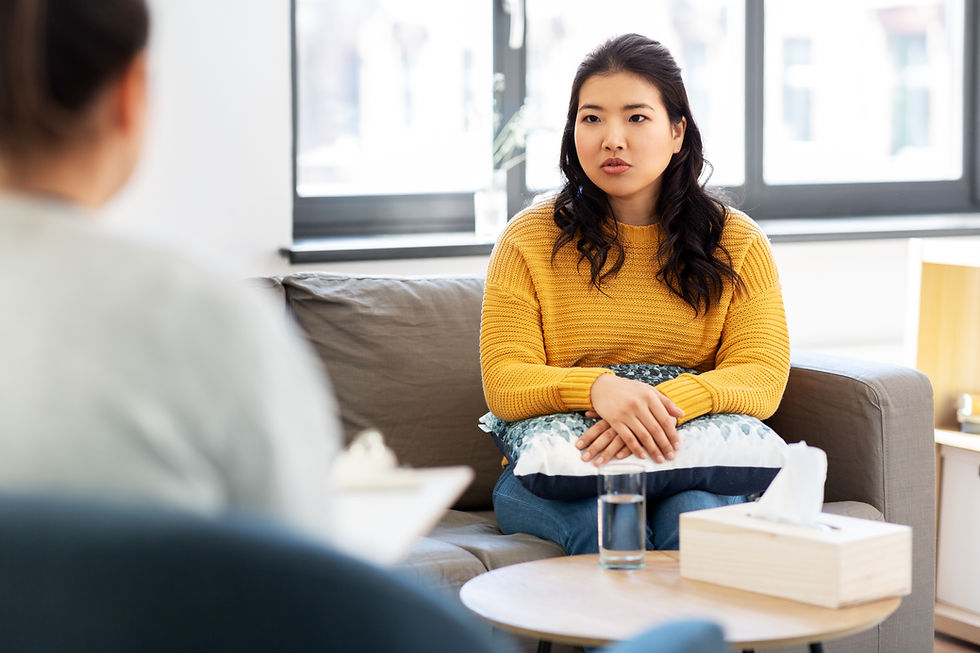4 Tips for Getting Through the Holidays During a Pandemic
- Skye White

- Dec 15, 2020
- 3 min read

The holiday season is here. If you’re worried about how the holidays will look this year for you and your family, you’re not alone. As the pandemic goes on, it continues to affect many plans and traditions.
Navigating the pandemic has been an exercise in acceptance. Accepting what we cannot change and making the best of it is essential in dealing with global factors out of our individual control.
Ambiguous grief or loss occurs in the absence of a clear point of closure (such as death). The pandemic has caused a sense of ambiguous grief and loss, even for those who have not lost a loved one. Since the pandemic began, many people have experienced lifestyle changes and plans that never came to fruition. Regardless of the magnitude of these changes, you may still be experiencing a feeling of loss. When experiencing any grief or loss, it’s important to acknowledge its effects and allow yourself to experience the emotions you’re feeling.
In acknowledging the concepts of acceptance and ambiguous loss, we can reflect on realistic options for the holidays. When we do not have control over external factors, we can make the best of what we do have control over. After months of limited contact with others and experiencing ambiguous loss, the desire to spend time with loved ones can be powerful, particularly around the holidays. Before committing to an in-person gathering, there are four important things to consider:
1. First and foremost, consider safety
The CDC has guidelines to host in-person gatherings safely. If you choose an in-person gathering, familiarize yourself with the guidelines to minimize the risk of infection as much as possible.
2. Respect others’ comfort levels
Beyond the safety guidelines, weigh the risks and benefits of all family members involved, including yourself, before determining to move forward with an in-person get-together. Carefully consider family members, especially those with high-risk conditions, and their comfort levels. Have a conversation among family members about everyone’s individual comfort level and default to the most cautious family member’s norms. It’s important to respect boundaries presented by your loved ones.
3. Consider some alternatives to indoor gatherings
It’s ok to mourn the loss of the gatherings with loved ones. Consider workarounds that allow you to see your friends in small groups and shorter bouts:
-If you miss gathering around the fireplace, you might have a socially distanced bonfire with a few loved ones, or gather around an outdoor fire pit for a shortened get together.
-In the Seattle area this year, there were many families taking walks together in the park on Thanksgiving day, likely walking off all the turkey! A hike in nature with a small crew could be a great way to spend time with loved ones.
-If local ordinances don’t allow for outdoor gatherings, or if they limit the group size, a video call may be a good alternative. Host a video call, either at a set time or an extended time, to allow for loved ones to “drop-in.”
4. Be flexible and open to new tradition
You might find yourself in a pod with people you wouldn’t normally celebrate the holidays with. Perhaps they are friends, neighbors, or coworkers. You might also find that the people you normally celebrate with are unable to celebrate in person with you.
Celebrating unconventionally is a great opportunity to get creative. This could look like a Zoom gathering where the whole family opens their presents over video. If you’d like to share a meal, everyone could cook their favorite holiday dish and meet outdoors to divvy up a holiday feast for everyone to take home, or simply deliver dishes to loved ones. For an even safer option, revive the lost art of the care package for those who are far away. There are many opportunities to adapt and show our love for one another in non-traditional ways.
Holidays can be a difficult time of year for some, even without a pandemic. If you feel that you need support, many therapists offer video appointments covered by most insurances. Telehealth is a safe and effective way to receive mental health support. Feel free to reach out and make an appointment.
.png)



Comments